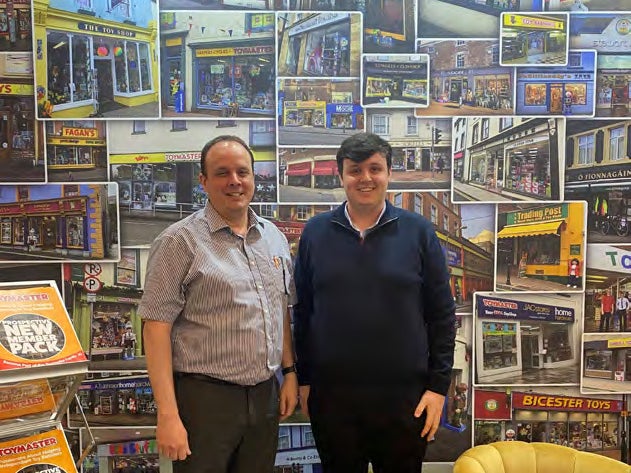Company Profile
Toys and data
KidsKnowBest CSO Pete Robinson tells us why it’s important, in the world of toys, to listen to children, parents and the world around them.
O
ne of the reasons I got into research within the kids and family industry is the movie Big. I didn’t know it at the time, but I was watching market research - one of the few times the subject is referenced in movies. Fast forward 40 years and I’ve learnt that hearing one child saying: “I still don’t get it. What’s fun about that?” can stop very expensive mistakes. In the world of toys, listening to children, parents and the world around them can be incorporated during the following stages:
be predicted in their cycle, based on the search behaviours of that time.
• Innovation; spotting a trend early and acting on it • Production and development; testing appeal, play patterns and usability • Distribution; ensuring that your target audience knows where to find you • Marketing; triggers and placement to optimise awareness and engagement Whilst we all have a little bit of Tom Hanks’ intuition, as co-founder and co-CEO of Spin Master, Ronnen Harary, suggested in his recent podcast interview, Tom’s character didn’t use research – well, not in the traditional sense. Usually, data can spot opportunity and reduce risk. This has never been more relevant as blockbuster IPs take more share of space and voice, fragmentation creates a huge selection of ‘mid-weight’ IPs and the speed of trends means being late can result in failure. There are many ways to use data effectively, but every person working in the toy industry should aim to do the following at each of those four stages: • Innovation Jeff Bezos says he frequently gets asked: 'What's going to change in the next 10 years?' but almost never gets the question: 'What's not going to change in the next 10 years?' He says: “I submit to you that the second question is actually the more important of the two, because you can build a business strategy around the things that are stable in time.” There is so much ‘always-on’ information available which can point you in the right direction. KKB has developed a tool called Guava, which benchmarks and tracks social trends. This allows us to identify trends based on previous themes and patterns. When considering a licence which will go to market in two to three years, or developing a character-based show, how do we know if we are picking the right licence theme or main character style? We consider multiple pieces of data that we calculate into an index which allows us to advise on what is about to become the next big thing. Two of the data pools are free and align somewhat with Jeff Bezos’s eye for what is not changing. A third is our commitment to embedding all our insights into the voice of the audience or consumer. Social trends - What is being searched for right now which tell us what is currently trending - and circular trends are both equally important. Once you find a stable benchmark in social search patterns, you can compare that over the last 10 years to anything from fidget toys to authors. Most play patterns can
Childhood development. Claims of changing developmental patterns are often misattributed. The ways in which children consume may differ but play patterns, for the most part, stay aligned. There is a great deal of existing research to learn from; we follow a host of academics and fund cross industry academia studies. This allows us to ensure that any toys or play systems we are developing are founded in
the world around them. We speak with thousands each year, but you could speak with less. The key is to have no set agenda, but to let them talk about themselves. We are confident that our finest insights come not from a survey or scraping tool, but from the mouth of one person. Whilst you need to know what you heard is relevant, it is this tool that ensures that the world around young people reflects what they actually want and not what we think they want.
a firm understanding of childhood. Consider the Lego Foundation or The Joan Gantz Cooney Centre, whose sole focus is to understand behaviour.
At this stage we know if an idea will meet a consumer need and is desirable.
YTS. The best insights come from listening, and whilst there are scale opportunities via social listening, those insights come from being with young people and families. A tool called YTS has been central to Kids Know Best’s vision of giving young people a voice in
• Production and development The best insights come from listening, but a huge part of understanding what people mean isn’t verbal. When testing new products or content, we need to know firstly when that product will fit into a household, and secondly why. The objective is to either
Toy World 74















